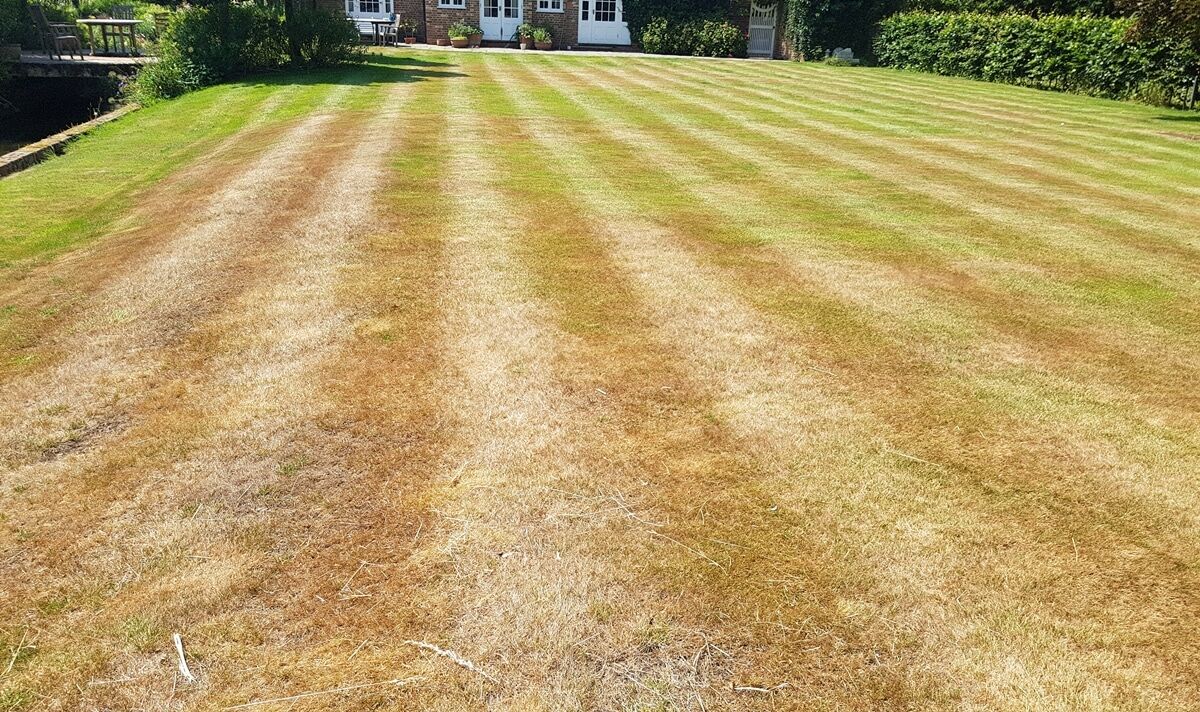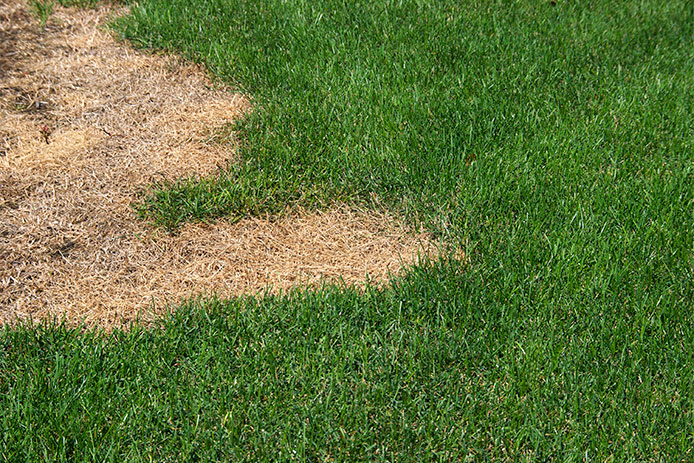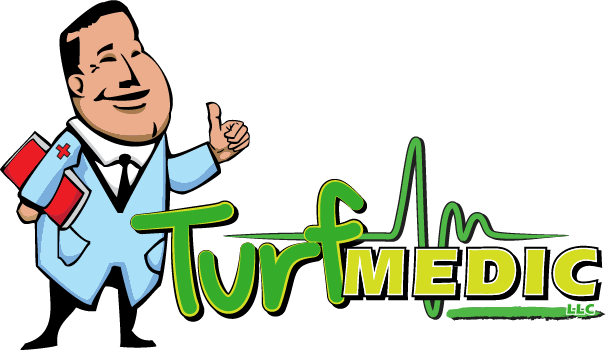You’re standing in your driveway on a Saturday morning, bag of fertilizer in hand, ready to give your Maryland grass the boost it needs. You’ve seen your neighbor’s lawn looking thick and green, and you’re determined that this will be the year your yard finally becomes the envy of the neighborhood. But here’s the thing – that eagerness to feed your lawn might actually be setting you up for one of the most expensive mistakes Maryland homeowners make.
We’ve all been there, wanting that lush, healthy lawn so badly that we grab the fertilizer at the first sign of spring, or figure more is always better when it comes to feeding our grass. But when it comes to Maryland grass, timing isn’t just important – it’s everything.
The truth is, knowing when not to fertilize your Maryland grass is just as crucial as knowing when to do it. Apply fertilizer at the wrong time, and you’re not just wasting your money – you could actually damage your lawn, feed the weeds you’re trying to eliminate, or even harm the environment around your home. In Maryland’s unique climate, with our hot summers, unpredictable springs, and varied winter conditions, there are specific times when your grass simply can’t use the nutrients you’re trying to give it.
Today, we’re going to walk through the critical times when you should keep that fertilizer spreader in the garage and how to recognize when your lawn is telling you it’s not ready for feeding.
During Dormant Season and Frozen Ground in Maryland
When your Maryland grass goes dormant in late fall, it’s essentially taking a long winter nap. The grass stops growing, root activity slows way down, and it can’t absorb or use nutrients effectively. During this dormant period, which typically runs from late November through early March in Maryland, any fertilizer you apply won’t be taken up by your grass roots.
Applying fertilizer to frozen or snow-covered Maryland lawns compounds this problem. When the ground is frozen solid, grass roots can’t absorb any nutrients, and the fertilizer just sits on the surface waiting for the next thaw or rain to wash it away. Snow acts like a barrier, preventing the fertilizer from even reaching the soil where it needs to be. Those unused nutrients don’t just disappear – they wash away with Maryland’s winter rains and snow melt, creating runoff that heads straight for our local waterways and contributing to pollution problems.
There is one exception to this rule: late fall winterizer applications. These special slow-release fertilizers applied in mid-November help Maryland grass store energy for winter and green up faster in spring. But timing is critical – too late in the season, and even winterizer becomes wasteful runoff. Wait until soil temperatures consistently stay above 40°F and snow cover is completely gone before considering any other fertilizer applications.

When Maryland Grass is Under Stress
Stressed grass is like a sick person – it needs recovery time, not more demands on its system. When your Maryland grass is struggling, fertilizer application becomes counterproductive and can actually make problems worse. Here are the key stress conditions to watch for:
- Drought conditions – When Maryland goes through dry spells, grass enters survival mode and can’t process nutrients properly
- Extreme heat periods – Temperatures above 85°F put grass under severe stress, making fertilizer burn much more likely
- After disease or pest damage – Recently damaged grass needs time to recover before it can handle additional nutrients
- Fertilizer burn risk – Extra salts in fertilizer compound existing stress and often create brown, dead patches
- Recovery time needed – Wait until stress conditions pass for better nutrient uptake and healthier growth
During Active Weed Growth Periods in Maryland
Here’s a frustrating truth about fertilizer timing: if you apply it when weeds are actively growing, you’re essentially feeding your problems instead of your grass. Many Maryland weeds, especially cool-season ones like dandelions and clover, become active before your desired grass starts growing vigorously. Fertilizing during these periods gives weeds a competitive advantage over your lawn.
This timing conflict becomes especially problematic if you’re planning to use pre-emergent herbicides. Many pre-emergent products need to be applied before soil temperatures reach certain thresholds, but fertilizing too early can interfere with these treatments or provide nutrients to the very weeds you’re trying to prevent.
The smart approach is to time your fertilizer applications when your Maryland grass is actively growing and can outcompete weeds for those nutrients. This usually means waiting until grass is green and growing vigorously, not just showing the first signs of spring life.
When Rain is Forecasted in Maryland’s Weather Patterns
Maryland’s unpredictable weather patterns mean you need to time fertilizer applications carefully around rainfall. Heavy rain within 24-48 hours of fertilization can wash away your investment and create environmental problems. Here’s what to watch for:
- 24-48 hour window – Avoid fertilizing when significant rain is expected within this timeframe
- Nutrient runoff – Heavy Maryland rains wash unused fertilizer into storm drains and local waterways
- Money wasted – Fertilizer that runs off provides no benefit to your grass but still costs you money
- Environmental impact – Excess nutrients in waterways contribute to algae blooms and water quality problems
- Weather timing tips – Check reliable weather forecasts and wait for a clear 48-hour window after application
- Light rain exception – Light showers can actually help activate granular fertilizer, but heavy downpours are problematic

On Newly Seeded Maryland Grass or Sodded Areas
New grass is like a newborn – it has very specific needs and can’t handle the same treatment as mature, established lawns. Whether you’ve just seeded bare spots or installed new sod, that young Maryland grass is focusing all its energy on developing root systems. Adding fertilizer too early can actually burn these tender new roots and set back establishment by weeks or even months.
Most lawn care experts recommend waiting at least 6-8 weeks after seeding or 4-6 weeks after sodding before applying any fertilizer to Maryland grass. During this establishment period, the grass needs consistent moisture and time to develop strong root systems that can properly process nutrients. When you fertilize new Maryland grass for the first time, use a starter fertilizer with higher phosphorus content, and apply it at half the recommended rate.
Warning Signs Your Maryland Grass Isn’t Ready for Fertilizer
Your Maryland grass will tell you when it’s not ready for fertilizer – you just need to know what to look for. Brown or yellow grass that isn’t actively growing is sending a clear signal that it can’t process nutrients effectively. If your lawn looks dormant, stressed, or damaged, fertilizer application should wait until you see signs of recovery and active growth.
Soil conditions matter just as much as grass appearance. If your Maryland soil is waterlogged from recent rains, frozen, or extremely dry and hard, nutrients won’t penetrate properly or reach grass roots where they’re needed. Compacted soil, common in Maryland’s clay-heavy areas, also prevents proper nutrient absorption. Check for these visual cues before fertilizing: grass should be green and showing new growth, soil should be moist but not soggy, and there should be no signs of disease, pest damage, or environmental stress.
The Right Time to Fertilize Maryland Grass
Getting the timing right for Maryland grass fertilization means working with your lawn’s natural growing cycles and our local climate conditions. Here are the optimal windows and guidelines:
- Early spring – Wait until soil temperature consistently reaches 55°F, usually late March to early April in Maryland
- Late spring/early summer – May through early June when grass is actively growing but heat stress hasn’t set in
- Early fall – September through early October when Maryland grass recovers from summer stress and prepares for winter
- Soil temperature matters – Use a soil thermometer 2-3 inches deep to confirm proper conditions
- Active growing season – Fertilize only when grass is green and actively growing, not dormant or stressed
- Maryland climate considerations – Our transition zone climate means timing varies slightly from year to year based on weather patterns
Conclusion
Getting fertilizer timing right for your Maryland grass isn’t about following a rigid schedule – it’s about reading your lawn’s needs and working with natural growing cycles. Avoiding fertilization during dormant periods, stress conditions, and bad weather windows will save you money and protect your local environment while giving your grass the best chance to thrive.
Remember, patience often produces better results than eagerness when it comes to Maryland lawn care. Your grass will respond much better to nutrients applied at the right time than to frequent applications that ignore natural rhythms and environmental conditions.
If you’re unsure about timing or want to take the guesswork out of Maryland grass care, top lawn care services can assess your specific conditions and create a customized fertilization schedule that works with your lawn’s unique needs and our local climate patterns.

Recent Comments